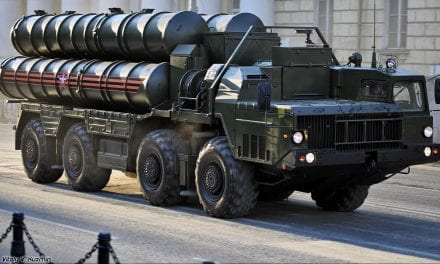By: Molly Cook*
As early as the 1970s, countries began to claim islands and various zones in the South China Sea.[1] However, recently China has intensified their territorial ambitions in the South China Sea, showing no remorse for their aggressive and destructive actions. Encircled by Malaysia, the Philippines, and Vietnam, it is one of the most resource-rich regions on earth. Not only does it provide one third of the world’s shipping traffic, but it also holds roughly 28 billion barrels of oil, 260 trillion cubic feet of natural gas, and 10% of the world’s fisheries.[2] Moreover, the most direct sea-route between Europe and Asia passes through the South China Sea. It is therefore critical that it remain available for the economies of China, Japan, and South Korea.[3]
The Spratly Islands, located in the South China Sea, are of particular interest because of the area’s estimated 11 billion barrels of untapped oil and 190 trillion cubic feet of natural gas. Being so resource rich, there are many competing claimants to them, including Brunei, Indonesia, Malaysia, the Philippines, Taiwan, China, and Vietnam.[4] However, China claims as much as 90 percent of the contested waters in the South China Sea by enforcing the “nine dash line.” The nine dash line refers to the undefined, ambiguously located, boundary line originally used by the Republic of China.[5] Early maps show a U-shaped eleven dash line, established in 1947, which has now been adopted and implemented by the Chinese government as a line that allows them access to and control of a large part of the South China Sea.[6] The line runs about 2,000 km from the Chinese mainland to within a few hundred kilometers of the Philippines, Vietnam, and Malaysia.[7] However, in 2016, an international tribunal dismissed the claim, maintaining that China has no historical rights to the South China Sea. China rejected this ruling, saying it was “ill-founded” and that they would not be bound by it.[8]
China has been focusing on island-building and naval patrols to work toward its goal of establishing organizational control over the South China Sea. This movement is intensifying concerns about the dependability of the United States and is allowing China to strong-arm the trade and military activities of surrounding countries. The US has remained impartial but has participated in “freedom of navigation” operations by sending military ships and planes near the islands to ensure continued access to key shipping and air routes.[9] More recently, US Defense Secretary James Mattis, called for Japan and South Korea to work with the US in the sea to prevent China from dominating the waters.[10]
There are many concerns about the territorial disputes, some concerns affecting our allies and others directly affecting the United States. On a global scale, China lacks firepower but is now able to challenge American military supremacy in areas that are the most valuable to them, like the waters around Taiwan and in the South China Sea.[11] Last year, it was announced that China’s Navy is the largest in the world. It now has more warships and submarines than the United States and is growing at a stunning rate. This means a growing section in the Pacific Ocean, where the US has been unobstructed since the naval battles of WWII, is once again contested territory.[12] If left unchallenged, the growing effect of China’s increasing power in the South China Sea will make it difficult for the United States to defend its interests in Southeast Asia. This includes the weakening of US security partnerships, the US military having less participation in agreements and settlements of disputes, and most importantly, the fact that neither regional institutions nor international law have proven to be influential enough to control and deter China’s behavior.
Security partnerships are becoming a concern because the disputes have the potential to draw the United States into a conflict between China and the Philippines due to the reaffirmed Mutual Defense Treaty between the Philippines the United States. There are large natural gas deposits and profitable fishing grounds in the disputed territories that both claimants want to have access to. If Chinese and Southeast Asian leaders cannot resolve the disputes through diplomacy, international laws that govern maritime disputes will be undermined, which could encourage threatening arms buildups.[13] The reality is that without help from the United States, these governments with intersecting territorial claims lack the power to challenge China, and it is risky for the United States to get involved as it might provoke a larger conflict. While many seek the United States for assistance in defense, the financial weight of China can be felt everywhere in the area; therefore, defensive help from the US might cripple their domestic economies. Furthermore, China imports more Malaysian goods and services than any other country and buys more from the Philippines than the US buys from the Philippines.[14] With this being said, China has economic power that constrains and limits these smaller countries, backing them into a corner where they must comply with China.
Directly affecting the United States, there is particular interest in ensuring freedom of navigation and securing the sea lines of communication (SLOCs). China’s claims undermine vital maritime routes that enable trade and the movement of naval forces. In May, two American warships — the Higgins, a destroyer, and the Antietam, a cruiser – engaged in a freedom of navigation operation and sailed within a few miles of disputed islands in the Paracels. China responded by sending vessels to challenge what Beijing later condemned to be “a provocative act” and a similar reaction was seen when three Australian ships were passing through the South China Seas in April.[15] Recently, in early October, a US Navy destroyer participated in a freedom of navigation operation and during the operation, a Chinese destroyer came within 45 feet of the boats and was referred to as, what Navy officials called, an “unsafe and unprofessional maneuver.”[16] Rear Admiral Michael McDevit, a senior fellow in strategic studies for the Center for Naval Analyses (CNA), warns that “as China’s military power grows relative to the United States, and it will, questions will also grow regarding America’s ability to deter Beijing’s use of force in settling its unresolved territorial issues.”[17] As a result of this potential threat, the United States has expressed interest in agreeing on a binding code of conduct and other possible confidence-building measures. Several days later, when asked about the operation, Secretary of Defense James Mattis responded, “We do not do freedom of navigation for America alone … it’s freedom for all nations, large and small, that need to transit those waters for their own prosperity and they have every reason to do so.”[18]
In accordance with international law, nations are able to claim territory up to 200 nautical miles from their coastline. The South China Sea is considered international water and not under the exclusive jurisdiction of anyone. The problem is, the Chinese government makes a historical claim of 90 percent of the waters, defined by the nine-dash line, even though the historical claims have been found illegitimate. Defying international law, in this specific situation, is becoming a larger issue everyday as China continues its efforts to monopolize the region. By doing so, it is threatening US security partnerships, the US military’s access to and presence in agreements and settlements of conflict, and some of our allies. To prevent adverse outcomes, it is important that the United States put a thorough set of military and economic policies in place beginning with “information” operations in addition to the “freedom of navigation” operations. Information operations will allow for more open and transparent communication between China, the United States, and countries that are affected by the conflict in the South China Sea. These information operations well help slow down China’s capability to expand and establish control of the South China Sea. One of the largest concerns about China’s island building, are their true ambitions. By creating a system of accountability with information operations, there is an opportunity for transparency and a potential for international cooperation. With cooperative international pressure, apparent diplomatic policies and potential security costs for China, the doggedness of aggression and action being taken in the South China Sea will decline.
[1] Council on Foreign Relations, “Territorial Disputes in the South China Sea,” Council on Foreign Relations, October 25, 2018, https://www.cfr.org/interactives/global-conflict-tracker#!/conflict/territorial-disputes-in-the-south-china-sea.
[2] Peter Phan, “Why is Tension Rising in the South China Sea?,” Forbes, December 19, 20017, https://www.forbes.com/sites/peterpham/2017/12/19/why-is-tension-rising-in-the-south-china-sea/#667709a21fa4
[3] Ibid
[4] Ibid
[5] Riegl, Martin, Jakub Landovský, and Irina Valko. Strategic Regions in 21st Century Power Politics: Zones of Consensus and Zones of Conflict. Newcastle upon Tyne, UK: Cambridge Scholars Publishing, 2014. https://books.google.com/books?id=vOumBgAAQBAJ&pg=PA67#v=onepage&q&f=false.
[6] Ibid
[7] Liu Zhen, “What’s China’s ‘nine-dash line’ and why has it created so much tension in the South China Sea?,” South China Morning Post, July 12, 2016, https://www.scmp.com/news/china/diplomacy-defence/article/1988596/whats-chinas-nine-dash-line-and-why-has-it-created-so
[8] BBC New, “South China Sea: US warship sails close to disputed Mischief Reef,” BBC News, May 25, 2017, https://www.bbc.com/news/world-asia-40040231
[9] BBC News, “Why is the South China Sea Contentious?,” BBC News, July 12, 2016, https://www.bbc.com/news/world-asia-pacific-13748349
[10] Christopher Bodeen, “Recent developments surrounding the South China Sea,” The Washington Post, October 22, 2018, https://www.washingtonpost.com/world/the_americas/recent-developments-surrounding-the-south-china-sea/2018/10/22/30e49166-d5bf-11e8-8384-bcc5492fef49_story.html?utm_term=.1fb2aececdf5
[11] Steven Lee Myers, “With Ships and Missiles, China Is Ready to Challenge U.S. Navy in Pacific,” The New York Times, August 28, 2018, https://www.nytimes.com/2018/08/29/world/asia/china-navy-aircraft-carrier-pacific.html
[12] Ibid
[13] Myers, “Ships and Missiles”
[14] Peter Phan, “Why is Tension Rising in the South China Sea?,” Forbes, December 19, 20017, https://www.forbes.com/sites/peterpham/2017/12/19/why-is-tension-rising-in-the-south-china-sea/#667709a21fa4
[15] Myers, “Ships and Missiles”
[16] Christopher Woody, “Tensions are rising in the South China Sea,” Business Insider, October 03, 2018, https://www.businessinsider.com/scarborough-shoal-is-red-line-amid-us-china-tension-in-south-china-sea-2018-10
[17] Hannah Beech, “China’s Sea Control Is a Done Deal, ‘Short of War With the U.S.,” The New York Times, September 20, 2018, https://www.nytimes.com/2018/09/20/world/asia/south-china-sea-navy.html
[18] CFR, “Territorial Disputes” and Bonnie Glaser, “Vanishing Borders in the South China Sea,” Foreign Affairs, June 05, 2018, https://www.foreignaffairs.com/articles/china/2018-06-05/vanishing-borders-south-china-sea
*Disclaimer: The content contained in the following material is the sole ownership of the author and does not reflect the Towson University Journal of International Affairs nor Towson University in any respect whatsoever.







